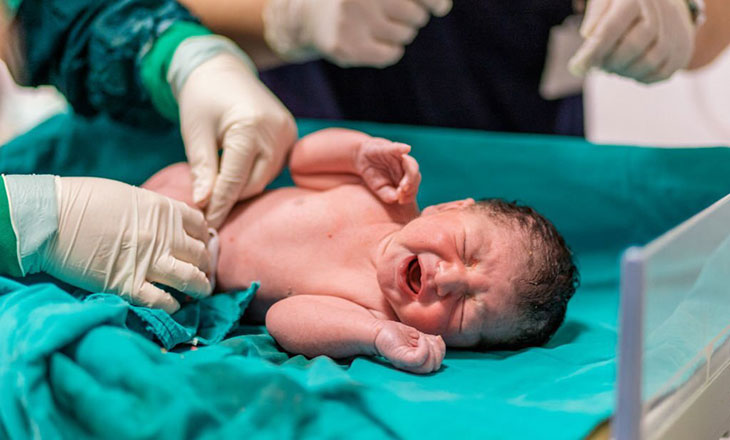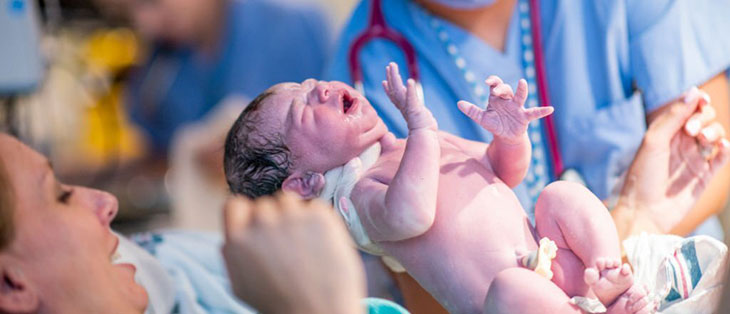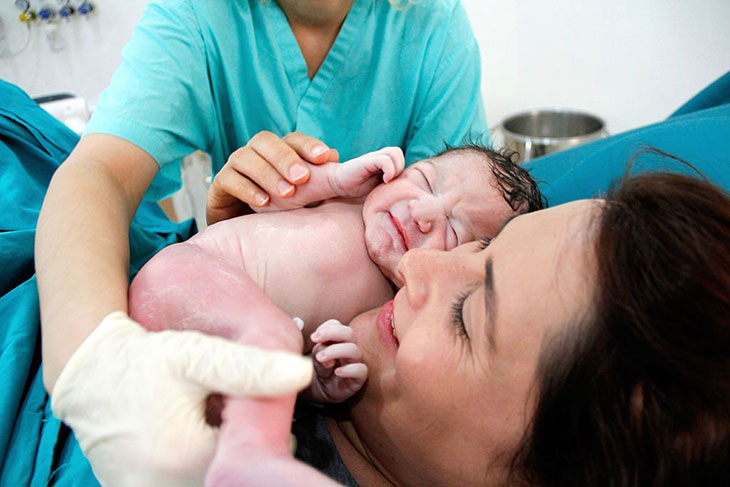There is great excitement and awe in the world when a baby is born. You may have noticed that medical staff frequently separate the mother and baby soon after birth.
Why do they take the baby away after birth? Have you ever wondered why this split seems to happen so suddenly?
Why Do They Take The Baby Away After Birth?

After birth, the infant is removed for necessary medical treatments like initial evaluations, cleaning, and guaranteeing their well-being.
It also enables the medical staff to care for the mother’s urgent postpartum needs.
Immediate Medical Procedure
Apgar Scoring
A crucial justification for the reason for taking the baby away after birth is the Apgar score.
The quick yet effective Apgar scoring, which bears the name of the eminent Dr. Virginia Apgar, is carried out on premature babies between one and five minutes after birth.
It is done to gauge your baby’s breathing and heart rate. This thorough evaluation provides a peek into the infant’s general health.
The capacity of Apgar scoring to swiftly uncover any pressing issues is its genuine core. The Apgar score serves as an early warning system, immediately resolving any possible problems.
Cleaning
Cleaning a newborn is critical to ensuring the baby’s health and well-being.
The baby’s delicate skin must be carefully cleaned of amniotic fluids, vernix, and dirt throughout this laborious procedure.
This process changes it from a disorganized state to a clean, cozy one.
The importance of infant cleanliness rests in its contribution to induction prevention, which goes beyond the cosmetic consideration.
The newborn’s environment must be kept clean for the first minutes after a difficult delivery. Healthcare experts decrease the risk of dangerous bacteria by carefully cleansing the infant.
Additionally, the cleansing procedure enables a visual examination of the baby’s skin, allowing the medical staff to spot any skin anomalies that may need additional treatment.
Eye Drops
Do they have to take your baby away after birth? Immediately after birth, eye drops and vitamin K should be given to healthy babies.
It is a technique that is very important. It guarantees their eye health and guards against unwanted infections.
To avoid eye infections, some of which can result in blindness, this is mandated by law in the United States.
These eye drops are gently injected into the baby’s eyes and frequently contain antibiotics or antiseptic treatments. These drops protect against typical bacteria.
They also aid in preventing the mother-to-child transmission of several sexually transmitted diseases.
The administration of eye drops is prioritized by healthcare experts, who proactively work to protect the baby’s eyes.
Collecting Blood
Blood collection is an essential step in the process. Blood cells are then removed from the umbilical cord and placenta during this procedure, also known as cord blood clotting.
It helps to prevent yellow discharge after giving birth. Stem cells are abundant in the blood pressure that was drawn. It has amazing potential to treat several ailments.
In addition to supplying a rare opportunity for medical innovation, cord blood vessel collection enables parents to make an informed decision about the potential advantages for the health of their unborn child.
Umbilical Cord Clamping And Cutting
The umbilical cord must be clamped and cut once your baby is born. If your baby is healthy, this often happens 1 to 5 minutes after birth.
The umbilical cord, the child’s lifeblood in the womb, is delicately constricted and severed after the child is delivered.
The circulation of blood is the cause of this process. Blood cannot flow from the newborn to the placenta while the cord is constricted.
As the baby’s blood supply transitions from the umbilical cord to the lungs, this phase aids in the infant learning to breathe on its own.
ID Bands And Footprints
What happens to a newborn immediately after birth? One of the reasons a baby is taken from the mother after birth is because of ID bands and footprints.
These steps guarantee accurate identification of the baby’s security and welfare.
The healthcare team created a clear and precise procedure for tracing each newborn by removing the baby to attach ID bands to their wrists and taking their imprints.
It lessens confusion and guarantees that the infant receives the proper treatment, medicine, and interventions.
Medical professionals may rest easy knowing the baby’s identity is documented, and parents can feel secure knowing their child is in capable hands.
In most hospitals, the footprints of your infant are routinely duplicated twice: once for the hospital record and once for you as a souvenir.
Maternal Health And Recovery
The choice to remove a baby from the mother after delivery is heavily influenced by the mother’s health and healing during the postpartum period.
Despite initially appearing paradoxical, this separation enables medical experts to concentrate on the mother’s health. It guarantees her the required medical care.
The mother’s body system needs to be repaired after giving birth during the crucial postpartum period.
If necessary, medical personnel can monitor the mother’s vital signs and provide pain relief by removing the baby.
The ability of healthcare professionals to foster a supportive environment that promotes quick recovery and ensures the mother’s general well-being is made possible by their focused attention on maternal health.
Ensuing Neonatal Health: NICU And Special Care
Why do babies get taken away after birth? An essential factor is ensuring neonatal health. It is what motivates the choice to remove the newborn after birth.
The Neonatal Intensive Care Unit (NICU) with special care facilities provides support when the newborn requires specialist newborn care.
Healthcare professionals can offer specialist therapies by moving the infant to the NICU or special care.
In some situations, removing the newborn after birth is motivated by the desire to give neonates who need extra care a chance to thrive with specialized care.
Cons Of Initial Separation Of Newborns

Delayed Bonding
One of the major disadvantages of infant separation is delayed bonding.
This crucial time, frequently mixed with happiness, is the perfect opportunity for parents to develop an emotional bond with their infant.
However, it can impede the first-time bonding experience if the infant is whisked away right after birth for various treatments, such as cleaning, eye care, or ID band insertion.
Parents could experience a disconnect during the first skin-to-skin touch after the separation.
According to studies, early bonding builds security for both the baby and the parents and boosts parental confidence.
Healthcare professionals are progressively implementing procedures that provide early parent-newborn interaction as they become more aware of the importance of this bonding process.
Disruption Of Breastfeeding
In addition to providing the best infant nutrients, breast milk supply contains vital antibodies and immune-supporting enzymes.
The start of successful breastfeeding can be hampered when infants are taken away for operations.
Delaying the start of exclusive breastfeeding might cause latching issues, a decrease in milk production, and difficulties keeping a nursing schedule.
Additionally, the separation may impact the hormones that drive milk production, aggravating the problem further.
Psychological Effects
Newborns and their parents may have psychological repercussions following the first time they are separated after birth.
Being taken from their mother soon after birth may cause the newborn to experience anguish, worry, and unease.
The mother’s absence can impact the baby’s emotional health and ability to adapt to the new surroundings after vaginal delivery.
Additionally, because they naturally wish to be near their infant and actively participate in their care, the separation may cause the parents to feel increased levels of stress and worry.
Healthcare workers work to foster a positive atmosphere for the infant and the parents during this crucial period by acknowledging the psychological effects of the first separation.
FAQs

Can A Baby Be Taken Away At Birth?
Yes, it is typical for a newborn baby to be whisked away for various procedures and evaluations, such as cleaning, eye drops, ID band insertion, or, if necessary, specialized medical treatment.
Several methods are followed to protect the newborn’s future health and safety.
When Can A Baby Be Taken Away From Its Mother?
Soon after birth, a baby may be taken from its mother for essential operations and evaluations.
The precise timing may change depending on the particular medical needs, such as cleaning, eye drops, ID band insertion, or specialist care.
The mother’s and the baby’s health and safety are priorities.
Why Can’t You Leave A Newborn Alone?
A newborn needs continual supervision and care; thus, it should never be left alone.
In addition to feeding, changing diapers, and maintaining a constant body temperature, healthy newborns have vulnerable requirements.
Leaving them alone puts their well-being and safety in danger.
Conclusion
In conclusion, taking the newborn is motivated by the main objective of protecting neonatal health. But it’s important to be aware of any potential downsides.
Healthcare practitioners try to establish a balance by focusing on the mother’s health and early bonding in that order.
These initiatives help to answer the question of “Why do they take the baby away after birth?” and provide a successful beginning to their journey together.
